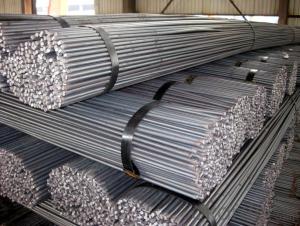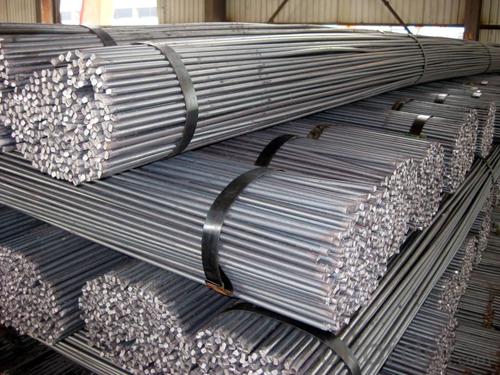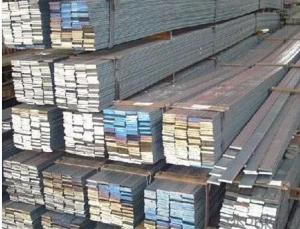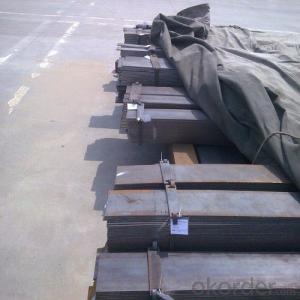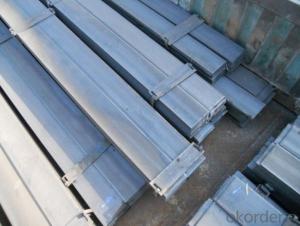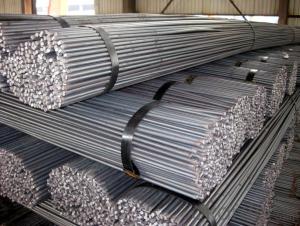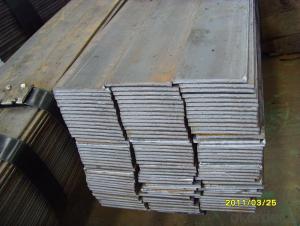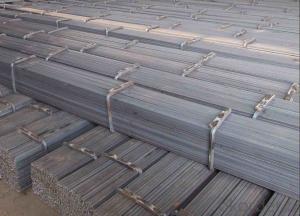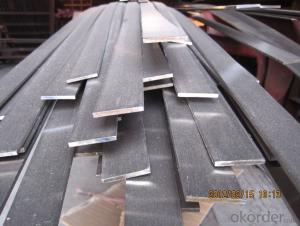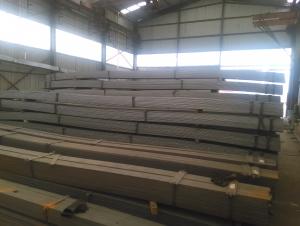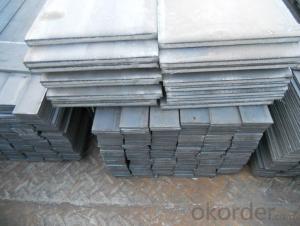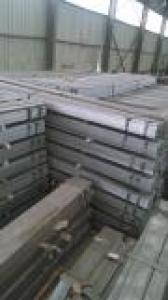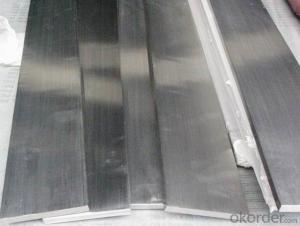Wide Flat Bar High Quality Hot Rolled 3-30mm Q235 Hot Rolled
- Loading Port:
- Shanghai
- Payment Terms:
- TT or LC
- Min Order Qty:
- 25 m.t.
- Supply Capability:
- 20000 m.t./month
OKorder Service Pledge
OKorder Financial Service
You Might Also Like
Product Applications:
High Quality Wide Flat Bar 3-30mm Q235 Hot Rolled are ideal for structural applications and are widely used in the construction of buildings and bridges, and the manufacturing, petrochemical, and transportation industries.
Product Advantages:
OKorder's High Quality Wide Flat Bar 3-30mm Q235 Hot Rolled are durable, strong, and resist corrosion.
Main Product Features:
· Premium quality
· Prompt delivery & seaworthy packing (30 days after receiving deposit)
· Corrosion resistance
· Can be recycled and reused
· Mill test certification
· Professional Service
· Competitive pricing
Product Specifications:
Manufacture: Hot rolled
Grade: Q195 – 235
Certificates: ISO, SGS, BV, CIQ
Length: 6m – 12m, as per customer request
Packaging: Export packing, nude packing, bundled
Chinese Standard (H*W*T) | Weight (Kg/m) | 6m (pcs/ton) | Light I (H*W*T) | Weight (Kg/m) | 6m (pcs/ton) | Light II (H*W*T) | Weight (Kg/m) | 6M |
100*68*4.5 | 11.261 | 14.8 | 100*66*4.3 | 10.13 | 16.4 | 100*64*4 | 8.45 | 19.7 |
120*74*5.0 | 13.987 | 11.9 | 120*72*4.8 | 12.59 | 13.2 | 120*70*4.5 | 10.49 | 15.8 |
140*80*5.5 | 16.89 | 9.8 | 140*78*5.3 | 15.2 | 10.9 | 140*76*5 | 12.67 | 13.1 |
160*88*6 | 20.513 | 8.1 | 160*86*5.8 | 18.46 | 9 | 160*84*5.5 | 15.38 | 10.8 |
180*94*6.5 | 24.143 | 6.9 | 180*92*6.3 | 21.73 | 7.6 | 180*90*6 | 18.11 | 9.2 |
200*100*7 | 27.929 | 5.9 | 200*98*6.8 | 25.14 | 6.6 | 200*96*6.5 | 20.95 | 7.9 |
220*110*7.5 | 33.07 | 5 | 220*108*7.3 | 29.76 | 5.6 | 220*106*7 | 24.8 | 6.7 |
250*116*8 | 38.105 | 4.3 | 250*114*7.8 | 34.29 | 4.8 | 250*112*7.5 | 28.58 | 5.8 |
280*122*8.5 | 43.492 | 3.8 | 280*120*8.2 | 39.14 | 4.2 | 280*120*8 | 36.97 | 4.5 |
300*126*9 | 48.084 | 3.4 | 300*124*9.2 | 43.28 | 3.8 | 300*124*8.5 | 40.87 | 4 |
320*130*9.5 | 52.717 | 3.1 | 320*127*9.2 | 48.5 | 3.4 | |||
360*136*10 | 60.037 | 2.7 | 360*132*9.5 | 55.23 | 3 |
FAQ:
Q1: Why buy Materials & Equipment from OKorder.com?
A1: All products offered byOKorder.com are carefully selected from China's most reliable manufacturing enterprises. Through its ISO certifications, OKorder.com adheres to the highest standards and a commitment to supply chain safety and customer satisfaction.
Q2: How do we guarantee the quality of our products?
A2: We have established an advanced quality management system which conducts strict quality tests at every step, from raw materials to the final product. At the same time, we provide extensive follow-up service assurances as required.
Q3: How soon can we receive the product after purchase?
A3: Within three days of placing an order, we will begin production. The specific shipping date is dependent upon international and government factors, but is typically 7 to 10 workdays.
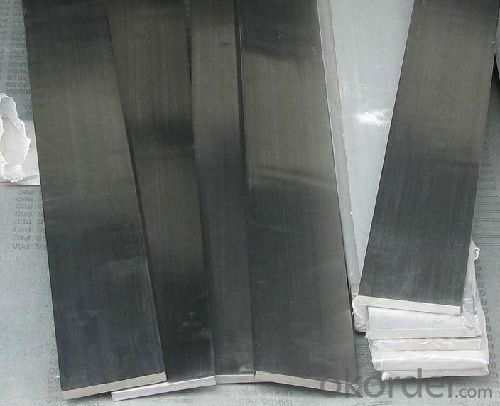

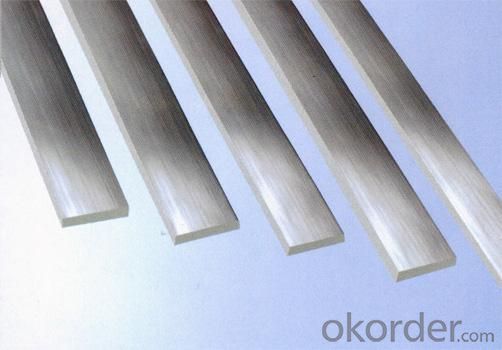
- Q: What is the rolling range of the micro cold rolled flat steel production line?
- Ferrous metals are alloys of iron and iron. Such as steel, pig iron, iron alloy, cast iron and so on. Steel and pig iron are based on iron, carbon as the main additive elements of the alloy, collectively referred to as iron carbon alloy.Pig iron is the product of smelting iron ore into a blast furnace. It is mainly used for making steel and casting.Put the casting pig iron smelting in cupola, to obtain iron (liquid), the liquid cast iron cast into casting, the cast iron is cast iron.
- Q: Can steel flat bars be used for structural applications?
- Yes, steel flat bars can be used for structural applications. Steel flat bars are versatile and can provide structural support in various construction projects. They are commonly used in the construction of buildings, bridges, and other infrastructure. Their flat and wide shape makes them suitable for load-bearing purposes, such as beams, braces, and framing elements. Additionally, steel flat bars offer excellent strength and durability, making them capable of withstanding heavy loads and structural stresses. They can also be easily welded, bolted, or attached to other structural components, allowing for efficient and precise construction. Overall, steel flat bars are a reliable choice for structural applications due to their strength, versatility, and ease of use.
- Q: How do steel flat bars compare to other types of steel profiles?
- Steel flat bars have several advantages over other types of steel profiles. Firstly, their flat shape makes them ideal for use in applications where strength and stability are important, such as in construction and manufacturing. The flat surface also allows for easy attachment and welding, making them versatile and easy to work with. Compared to other steel profiles, such as round bars or square bars, flat bars have a larger surface area, which can contribute to better load distribution. This makes them suitable for applications that require even weight distribution, such as in bridges or platforms. Additionally, steel flat bars have a uniform thickness throughout their length, unlike other profiles that may have varying thicknesses. This uniformity ensures consistent strength and structural integrity, making flat bars reliable and predictable in their performance. Furthermore, steel flat bars are often more cost-effective than other profiles due to their simpler manufacturing process. They can be produced in large quantities and require less machining, resulting in lower production costs. This affordability makes them a popular choice for various industries. However, it is important to note that the choice of steel profile depends on the specific requirements of the application. While steel flat bars offer many advantages, other profiles may be more suitable in certain situations. Factors such as load-bearing capacity, aesthetics, and ease of installation should be considered when determining the most appropriate steel profile for a particular project.
- Q: Are steel flat bars used in the aerospace industry?
- Yes, steel flat bars are used in the aerospace industry. They are commonly used for various applications such as structural components, support brackets, and fittings due to their strength, durability, and ability to withstand high temperatures.
- Q: Can steel flat bars be used for creating handrails or guardrails?
- Handrails or guardrails can indeed be created using steel flat bars. These bars possess remarkable strength and durability, rendering them a fitting material for the construction of handrails and guardrails. With their sleek surface, they provide a pleasant grip and can be effortlessly molded and welded to fulfill precise design specifications. Furthermore, steel flat bars exhibit an exceptional capacity to endure substantial burdens, ensuring the requisite support and safety for handrails and guardrails.
- Q: Hot dip galvanized flat steel specification 40X4, 60X6 meaning?
- Hot galvanizing is a kind of anticorrosive process. It is coated with zinc on the surface of the plated parts. Zinc is relatively stable in the air. 40x4 60x6 is the width and thickness of the plated part, in mm
- Q: What is the difference between carbon steel and stainless steel flat bars?
- The main difference between carbon steel and stainless steel flat bars lies in their composition and properties. Carbon steel flat bars are primarily made of iron and carbon, with a maximum carbon content of 2.1%. This makes them strong and durable, but they are not resistant to corrosion. On the other hand, stainless steel flat bars contain a high percentage of chromium (at least 10.5%) along with iron and other elements. This chromium content forms a protective layer on the surface of the steel, making it highly resistant to corrosion and rust. Due to its corrosion resistance, stainless steel flat bars are commonly used in applications where exposure to moisture or chemicals is a concern, such as in marine environments or the food industry. Carbon steel flat bars, on the other hand, are often used in applications where strength and durability are the primary requirements, such as construction and manufacturing. Another notable difference is the appearance. Carbon steel flat bars have a dull gray finish, while stainless steel flat bars have a shiny, reflective surface. This aesthetic difference can be a factor in certain applications where appearance matters, such as architectural or decorative purposes. In summary, the key differences between carbon steel and stainless steel flat bars are their corrosion resistance, composition, and appearance. Carbon steel is strong and durable but prone to corrosion, while stainless steel is highly resistant to corrosion and offers a shiny finish. The choice between the two depends on the specific requirements of the application at hand.
- Q: How do steel flat bars compare to other types of metal flat bars?
- Steel flat bars have several advantages over other types of metal flat bars. Firstly, steel is known for its strength and durability, making it a reliable choice for various applications. Steel flat bars can withstand heavy loads and are less likely to bend or break under pressure compared to other metals. Additionally, steel flat bars offer excellent corrosion resistance, especially when compared to metals like aluminum or copper. This makes them suitable for outdoor or marine environments where exposure to moisture or saltwater is common. Another advantage of steel flat bars is their versatility. They can be easily welded, formed, or machined to meet specific requirements. Steel can also be heat-treated to enhance its properties, such as hardness or toughness. Furthermore, steel flat bars are readily available in a wide range of sizes and thicknesses, making them suitable for various construction, manufacturing, and industrial applications. They are commonly used in structural support, frames, brackets, and machinery components. However, it is important to note that steel flat bars may be heavier than other metals, such as aluminum. This can be a consideration when weight is a concern, especially in industries like aerospace or automotive. Overall, steel flat bars offer a combination of strength, durability, corrosion resistance, and versatility that makes them a popular choice in many industries.
- Q: How is steel flat bar manufactured?
- Steel flat bars are typically manufactured through a process known as hot rolling. This involves heating a steel billet to high temperatures and then passing it through a series of rolling mills to achieve the desired thickness and surface finish. The hot rolling process helps to refine the grain structure of the steel, making it stronger and more durable. Once the desired dimensions are achieved, the flat bars are cooled and cut into the required lengths.
- Q: Can steel flat bars be used for manufacturing construction equipment?
- Yes, steel flat bars can be used for manufacturing construction equipment. Steel flat bars are commonly used in the construction industry for various applications such as structural supports, framework, and reinforcement due to their strength, durability, and versatility. They provide stability and reliability, making them suitable for manufacturing heavy-duty construction equipment.
Send your message to us
Wide Flat Bar High Quality Hot Rolled 3-30mm Q235 Hot Rolled
- Loading Port:
- Shanghai
- Payment Terms:
- TT or LC
- Min Order Qty:
- 25 m.t.
- Supply Capability:
- 20000 m.t./month
OKorder Service Pledge
OKorder Financial Service
Similar products
Hot products
Hot Searches
Related keywords
